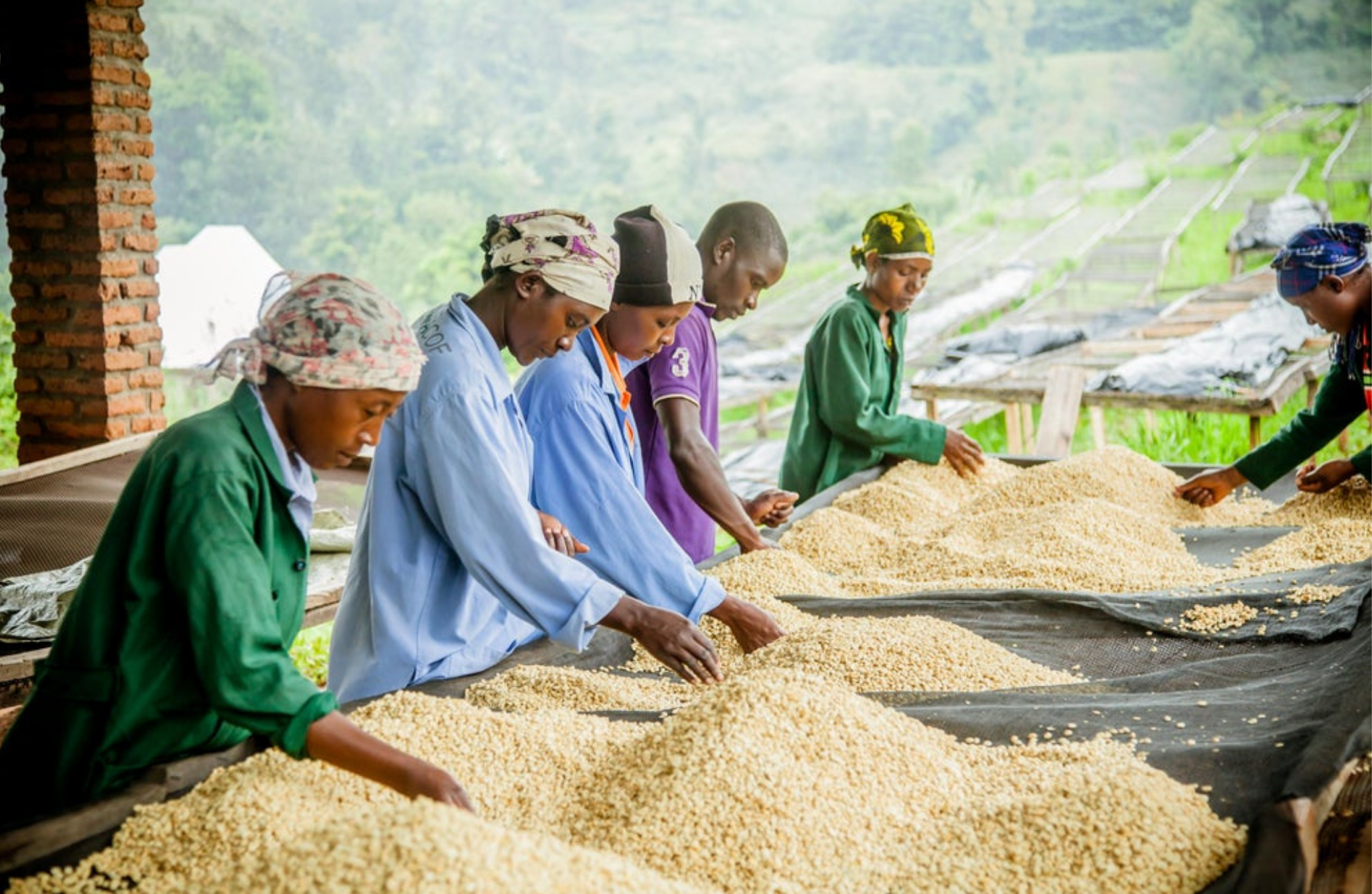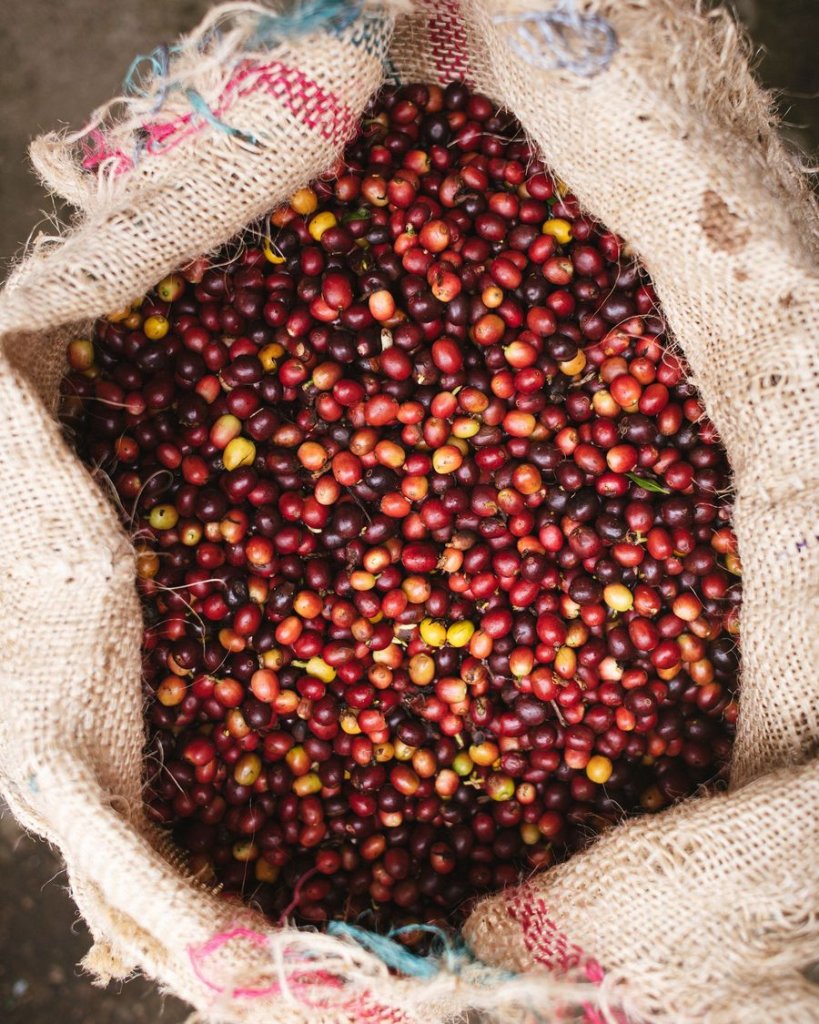Our commitment to transparency
Understanding our transparency data

Ever since starting Blossom, our mission has been clear: we want people to fall in love with speciality coffee and encourage them to be part of a movement that helps to protect it for future generations.
While we enjoy the incredible luxury of speciality coffee on a daily basis, the farmers responsible for producing these lots too often do not receive the necessary income to ensure financial stability for their businesses. In these instances, often the best case scenario is that farmers will start to cut corners on sustainable production, while in the worst case scenarios they will be driven out of the industry altogether and into more profitable crops.
We feel a responsibility first and foremost to work in a way which ensures financial stability for the producers with whom we work, and we see transparency as absolutely central to this. By publishing transparency data and openly communicating how much is being paid for our coffees, we hope to challenge the current pricing mechanisms based on commodity markets and to distinguish ourselves from those that use ‘transparency’ only as a marketing tool.
At the end of 2021, our first full year in business, we’ll be publishing our first transparency report. In the mean time, we are sharing the importer, FOB* price, volume purchased and purchase history for every coffee we buy on the shop pages of our website. As a very small-scale coffee roastery, we work with a handful of importers to source our coffees rather than engaging in ‘direct trade’. We strictly only work with those who share our vision of securing a sustainable future for coffee producers, and who are open and supportive in sharing transparency data. Please note that all FOB prices published are those negotiated between importer and producer/exporter, and we’re grateful to each of them for sharing this data.
*FOB: Free on Board is the price of the coffee packed and stacked in a container ready for shipping. The FOB price includes the total paid to the farmer plus domestic transportation, milling, sampling, packing, and so on. While this is not a perfect indication of how much is paid to the farmer, we believe that by working with transparent supply chains and the same importers and producers year on year, we can be confident that the producers are receiving the majority of the FOB price and that there is an upward trend over time.


To delve a little deeper into the subject, we spoke to Andrew Tucker from Volcafe who has been instrumental in helping us to source our El Salvador coffees, and to whom we couldn’t be more grateful for his openness and transparency.
What is the impact of low prices on the speciality coffee industry?
Whilst many would like to believe that specialty prices are not influenced by the commodity exchange prices the fact is that producers will sell their coffee at the going rate of the market +/- the differential premium that relates to their specific origin/quality. So the commercial market still acts as the benchmark for most specialty transactions, albeit at arm’s length.
So whilst a true roaster > producer transaction may be negotiated purely on quality, irrespective of the wider market pricing, the reality is that most specialty coffee is still sold with a degree of relativity to the NY ‘C’ because that market price determines the differentials paid for qualities over and above the market.
In terms of the impact of low pricing, it often means that roasters and retailers reap much of the benefit in terms of the margins available along the supply chain, whilst producers lose out from a low-price market environment.
One begins to see that really the vast majority of price risk therefore falls at the producers door, and that is probably the single biggest discussion point facing the specialty industry: how can we all work together to alleviate more of that price risk from the producers and spread it more evenly amongst all of the actors. Really the answer lies with the consumers, and the need for them to pay more for their cup. But it also requires a shared and transparent relationship all the way back to origin because for the market to work efficiently and profitably for all concerned, each actor’s business needs to be economically sustainable.
Obviously sustained periods of low pricing means unsustainable livelihoods for producers hence why so many farmers have ditched coffee either in favour of more profitable crops, or indeed for alternative professions and incomes all together, and that is an ongoing, very real issue in most producing countries.
In the context of green coffee buying, to what extent do you think transparency is valuable?
With reference to above, I think it’s vital. The need for transparency is driven by the need for all actors in the supply chain to be able to sustain or even grow/improve their businesses, incomes and livelihoods.
So an open and transparent relationship between all, understanding what each party needs from the relationship to make it not just viable but prosperous is critical in my opinion. The more we understand about each of our partners businesses the better we can address the issues at hand. So for me that starts with Cafes/Café owners understanding the margins and cost of doing business by their roasting partners in order for them to maintain buying green coffee at sustainable prices, which are in turn passed on by the importers to the exporters and on to the producers.
If you’re a café demanding cheap kilo prices, free machinery and lots of free training from your roaster then it’s not hard to work out that the prices afforded by that roaster for green coffee are going to be low. Meaning less money ultimately going back to the importers, the exporters and ultimately, the producers. That is unsustainable and for me, a race to the bottom.
How can coffee farmers benefit from more transparent supply chains?
In my (somewhat limited) experience of dealing with farmers and buying from them directly, the more they can understand about the needs of the roaster as the primary buyer in the supply chain, the better they can at least try to ensure their own business can meet those needs in a more economically (and sometimes environmentally) sustainable way. That might involve labour planning, raw material procurement, investment planning or adopting new/varied agronomic practices for example.
Planning ahead is key, regular communication between all parties and a lot of mutual trust & respect will help to hopefully de-risk, nurture and protect sustainable supply chain relationships.
What are the limitations of FOB data?
I get asked this a lot, and whilst it’s great that there is an increasing quest, mainly from roasters about pricing transparency, FOB pricing only really paints a small part of the picture.
It’s only really relevant as a singular piece of data if you have a full understanding of the whole supply chain. It depends heavily on who is selling the coffee on a FOB basis: is it an exporter? Is it a co-operative or is it a vertically integrated producer? Therefore how does the FOB price relate to the price received by the producer (farmgate price).
Without that knowledge, it (the FOB price) is limited to only really telling a roaster for example how much margin the seller is making from the transaction.
In many cases I have seen, little or no questions get asked to really understand its relativity to domestic COP, how is coffee transacted in origin, what quality premiums exist for different grades, what are export costs and farmgate pricing, Not to mention socio-economic data such as cost of living and currency valuations.
Much of the tech finance being poured into the coffee industry currently is aimed at addressing this very issue to ensure verified transparent price data is obtainable by all. It’s a complex subject and is typically easier to dissect within the specialty market because supply chains can often be smaller and more transparent from producer to consumer.
